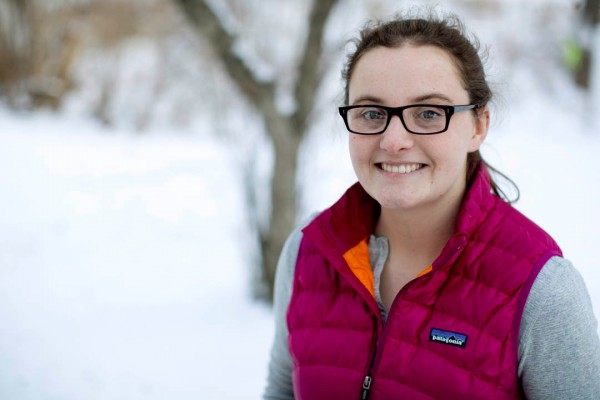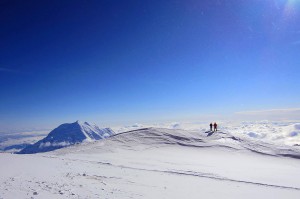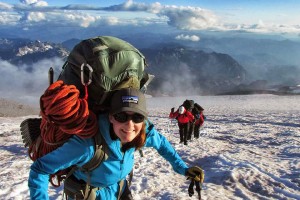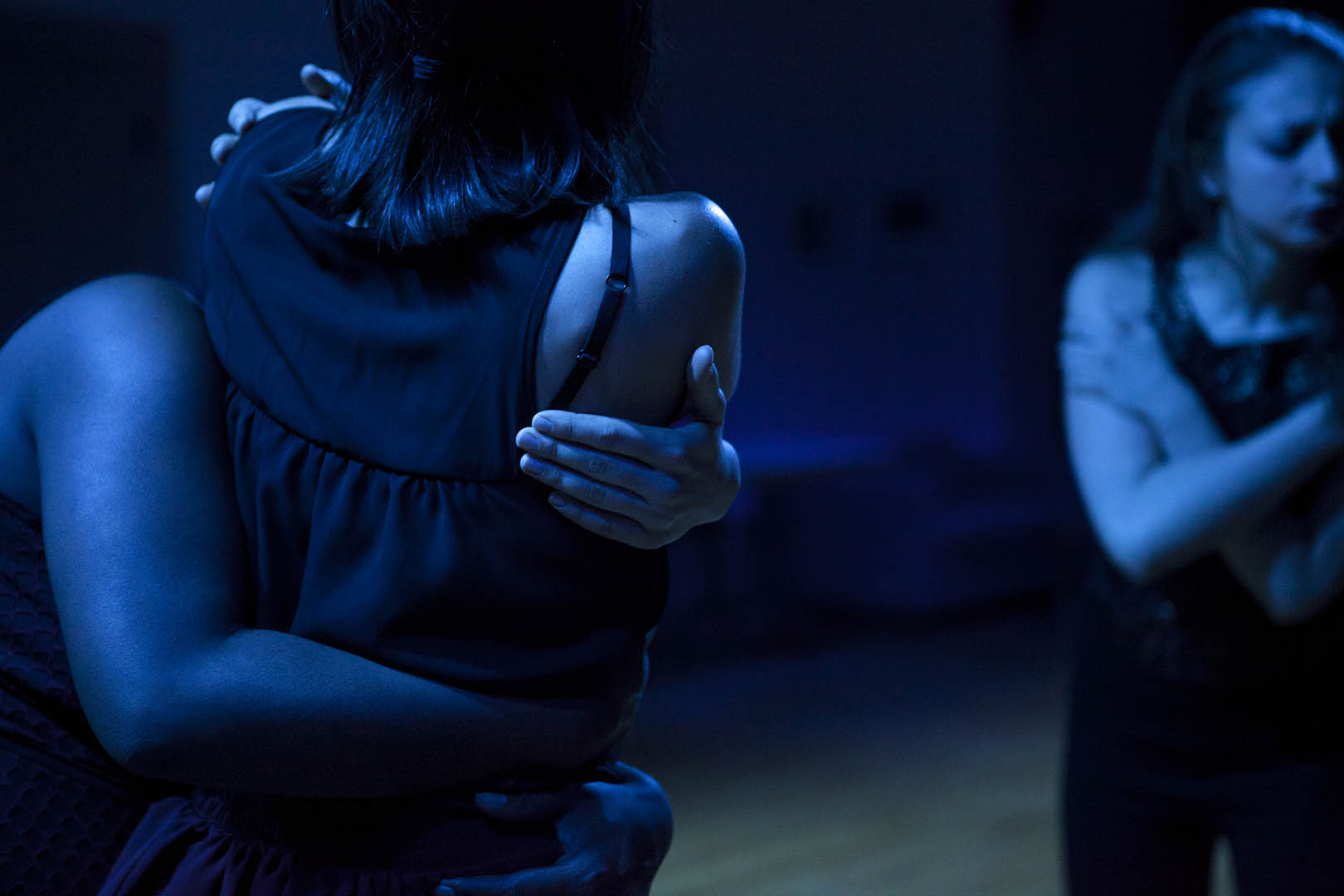
Kristen Kelliher ’16 leads team up Aconcagua, highest peak in the Western Hemisphere
While many of us spent New Year’s Eve counting down, Kristin Kelliher ’16 was going up.
Way up.
Right now, Kelliher is leading a three-person team — two fellow Bates sophomores and her stepfather, Bill Bender — to the summit of Aconcagua, a 22,841-foot peak in western Argentina that’s the tallest in the Western Hemisphere.

Kristen Kelliher ’16 of Norwich, Vt., the youngest female to climb the highest peaks in all 50 U.S. states, is leading a hike up Aconcagua, the Western Hemisphere’s highest mountain. (Phyllis Graber Jensen/Bates College)
She’s climbing Aconcagua not just “because it’s there,” in the words of Everest climber George Mallory, but for a related reason: The mountain is not here, meaning in the U.S.
Kelliher has already climbed all the highest peaks in the U.S., becoming the youngest female to “highpoint” all 50 states in 2012 when she reached the top of Alaska’s Denali at age 18. She was also the youngest highpoint the lower 48 states, in 2011, receiving loads of media attention for both achievements.
Besides reaching even greater heights on this South America trek, the Aconcagua climb is the first that she’s leading. “My other big mountains, like Rainier, were guided,” she says.
She chose Aconcagua because she “wanted something not technically difficult” for her first major climb as a leader. At the same time she sought the challenge of “being able to plan, fund and do my own trip of substantial size with no guides.”
“We’ll take it really slow.”
The biggest obstacle on this climb, she says, “is altitude. It’s the highest I’ve been.”
During the fall, she and her Bates climbmates, Jordan Cargill ’16 of Freedom, N.H., Jonathan Gougelet ’16 of Hanover, N.H., trained for the climb by doing laps up and down Mount David (elevation 354 feet) while carrying 50-pound packs.
“We’ll take it really slow, not just one push,” she says. “We’ll do acclimatization hikes, and we’ll ‘climb high, sleep low.'”
“Climb high, sleep low” is a strategy where a climber takes some gear to the next, higher camp, then hikes back down to sleep at the lower camp. The next morning, the climber hauls the tents and the rest of the gear to the higher camp, repeating the process all the way up the mountain.

This photograph from Kelliher’s 2012 climb of Denali shows the landscape at 17 Camp, so named for its 17,000-foot elevation. (Photo: Kristen Kelliher ’16)
Kelliher’s team departed Bates right after finals, on Dec. 15, traveling by plane from Boston to Miami, from there to Santiago, Chile, and then on to Mendoza, Argentina. They took the bus to Los Penitentes to meet a mule team that would haul their gear to the base camp, Plaza de Mulas, at around 14,000 feet.
They hope to hit the summit around Jan. 1, where they’ll unfurl a Bates banner.
Kelliher describes mountain climbing “beautiful, hard and rewarding.”
“You’re not thinking. You’re just going.”
“When you’re on a rope team, 30 feet from the next person, it can be so reflective. All you hear is your ice ax, your crampons, and your own hard breathing. You’re not thinking. You’re just going. It is a very comfortable state to be in.
“Then you get to the top — or not — and you say, ‘That was cool, that was agreat experience.’
“Sometimes I hate it. I wonder why I do it. It’s painful, hard and emotionally and physically demanding. But something about it draws me.”





